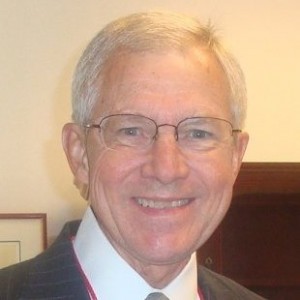Perspectives From the Real Estate Forum: John Walsh
On November 18, over 150 people packed into the Colombe d’Or ballroom for the Montrose Management District’s Real Estate Forum, featuring talks by real estate experts Brian Janak, Ryan Epstein, and John Walsh about the prospects for development in Montrose in the coming years. All this week we’ll be running excerpts from the speakers’ talks, beginning today with Walsh, who recently retired from directing the graduate real estate program at the University of Houston’s Bauer College of Business. He’s also served as the Director of Real Estate and Campus Planning for the UH system.
“Montrose is very stable. People want to live here, and they’re going to continue to want to live here. I’d like to give you a little insight into what it will take to accommodate that growth so that Montrose can maintain all the things we love about it. If you look at the number of projects currently under construction, the growth will continue. Yes, $45 oil is a problem, but I don’t think it will dramatically change the growth pattern in Montrose. The inner-city attractions are just too significant. I live near Buffalo Bayou, and it’s just unbelievable how many people are out in Buffalo Bayou Park—everyone from young people to old people. It’s packed all the time, and if you’ve noticed, that’s where a lot of new development is occurring. The museum district is also continuing to grow, so the outlook is good.
What are the constraints on growth? First of all, nearly half the intersections in Montrose go to service level F, which means it takes three cycles of the light for a car to move through the intersection. If you add all the people who are expected to move here by 2019, all our intersections will go to F. We’ll have gridlock if we continue to grow in the same way we have in the past.
As many of you know, all of the collector streets in Montrose are scheduled to be rebuilt as “Complete Streets.” Complete Streets, if you aren’t familiar with the concept, are streets built to accommodate pedestrians, rapid transit (including buses), bicyclists, and cars. And the way we do that is not by buying more right-of-way, which is impossible, it’s by diminishing the automobile capacity of the roadway. The city made the strategic decision to implement Complete Streets to create more walkable, bikeable neighborhoods.
In our area, we also have the option to designate certain streets as rapid transit lines. That gives developers the opportunity to get a shorter step-back in order to get more developable square feet on your property. You forfeit two feet of your property to the public realm, and then you can build closer to the street. That combination of Complete Streets and rapid transit corridor streets mean that we’re going to become a walkable neighborhood instead of a motor vehicle-dominated neighborhood. Now, that may come as bad news to you, but when you look at the alternatives it really makes sense. The city and the planning commission have made the decision, so this is something that will happen—it isn’t a maybe.
In conclusion, I do think growth will continue. The attractions in Montrose are just too powerful. Development opportunities will be limited, but they’ll be there, subject to the constraints I’ve talked about. And we’ll become more attractive thanks to Complete Streets, which will make the neighborhood more walkable. We could be the model for how to do it right in Houston, Texas.”

